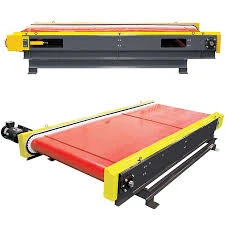Eddy current separators have revolutionized waste management and recycling industries by providing an efficient and effective method for sorting non-ferrous metals from waste streams. This technology harnesses the principles of electromagnetic induction to separate valuable materials, such as aluminum, copper, and other non-ferrous metals, from large quantities of mixed waste. Understanding the components and working process of an eddy current separator is essential for industries seeking to enhance their waste processing efficiency and material recovery rates.

At the heart of the eddy current separator is a rotating magnetic drum that creates a high-frequency, alternating magnetic field. As non-ferrous metals pass through this field, electric currents, known as eddy currents, are induced on the surface of these metals. The induced eddy currents, in turn, generate their own magnetic field, which opposes the original magnetic field produced by the drum. This interaction results in a repulsive force that effectively pushes the non-ferrous metal particles away from the waste stream, allowing them to be collected separately.
The effectiveness of an eddy current separator is heavily dependent on several critical components the magnetic rotor, the conveyor belt system, and the splitter. The magnetic rotor is typically mounted within a non-metallic drum to ensure that the alternating magnetic field is concentrated on the desired area. It is engineered to rotate at high speeds, which increases the intensity and frequency of the magnetic field, thereby maximizing the induced eddy currents in the non-ferrous metals.

Complementing the magnetic rotor is the conveyor belt system, which transports the mixed material stream through the magnetic field. The material first enters the separator via a vibrating feeder, ensuring an even and controlled feed rate across the conveyor belt. This uniform distribution is crucial for optimal separation efficiency, as it prevents material build-up and allows the magnetic field to impact each particle individually.
eddy current separator diagram
The final component is the splitter, an adjustable physical barrier that separates the ejected non-ferrous metals from the remaining inert materials. By fine-tuning the position and angle of the splitter, operators can achieve precise separation, ensuring maximum recovery of valuable non-ferrous metals while minimizing contamination of the recyclable output.
Real-world applications of eddy current separators span several industries, including municipal solid waste processing, automotive shredding, and electronics recycling. These separators are invaluable for recovering aluminum from plastics in packaging waste, extracting copper from shredded vehicle remains, and isolating precious metals from electronic circuit boards. Companies utilizing this technology not only improve their sustainability efforts but also gain a competitive edge by reducing landfill contributions and recovering valuable materials for resale or reuse.
To further enhance the performance and reliability of eddy current separators, regular maintenance and calibration are crucial. It involves inspecting the magnetic rotor for wear and tear, ensuring the conveyor belt is in good condition and properly aligned, and periodically adjusting the splitter to accommodate changes in material streams. By maintaining optimal operating conditions, industries can ensure consistent separation efficiency and prolong the lifespan of their equipment.
In conclusion, eddy current separators represent a pinnacle of innovation in recycling technology, offering unparalleled expertise in material separation. Their authority in industry applications demonstrates a high degree of trustworthiness and dependability, making them an indispensable component in modern waste processing facilities. Investing in this sophisticated technology not only underscores a commitment to environmental responsibility but also promises substantial economic returns through material recovery and conservation.


